You have a senior dog, and he’s been having some issues lately. Or maybe you’ve decided to adopt an adult dog and you want to give him a safe place where he can feel comfortable in his new home. No matter what the reason, you can indeed teach an old dog new tricks.
Here’s some information on why crate training is so important, and how to go about it no matter what age your pup is.
Why Crate Training Is Good for Your Dog
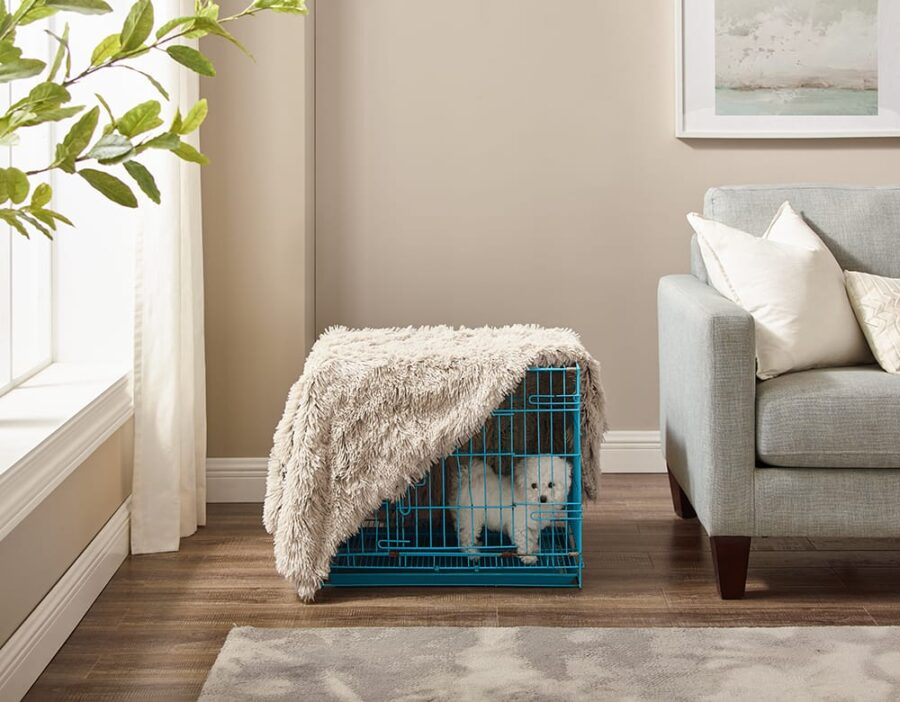
Whether you’ve owned a dog or not, you might be skeptical about sticking him in a dog crate. Will your older dog like that? Is it going to cause more problems? Is he going to feel claustrophobic?
The truth is that most dogs like crate time as long as you properly train them to go in their crate and make it a cozy environment for them. A plastic crate, wire crate, or a collapsible metal one could be good for your dog. It’s his safe space where he can relax and feel secure.
Additionally, it comes in handy because you can use it for training purposes. For instance, when you first get your older dog, he may be anxious and end up going to the bathroom all over your house. But typically, dogs won’t soil their own spaces. Putting him in a crate for a few hours while you can’t supervise him could help him with potty training issues.
If your dog has separation anxiety, a crate could provide him with the comfort he needs to feel safe as well. Or, if he has issues with noise, like thunder, he could go into his crate to feel better.
You should also use a crate when taking your dog in the car. It is much safer than letting him roam free in your vehicle, which can lead to an accident and make your dog feel more anxious to boot.
Now, here are some tips on how pet parents can get their older pooch to try out the crate.
Make the Crate Appealing
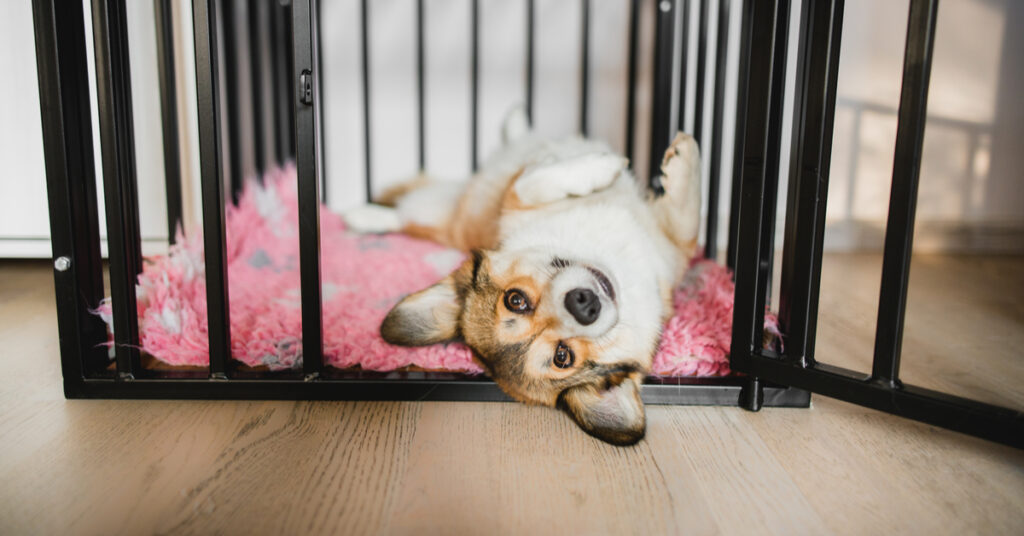
First of all, you’ll want to make sure that your dog can stand up and turn around inside his crate. Then, you’ll know it’s big enough. If it’s too big, you can always use a divider in the middle or get a smaller crate.
Put the crate in a room where your dog can calm down. Maybe this is a den or a room where you can close the door. Place a comfortable bed and soft blanket inside the crate so that your dog wants to go in there.
One option for a great dog bed is a calming donut dog bed. These types of beds have a calming, self-warming effect and will support your older dog’s joints while providing better sleep. The removable shells on the M-XL Best Friends beds are machine washable as well, making cleanup super easy.
It’s also a good idea to put one of your older dog’s favorite toys in his crate with him. If he likes squeaky toys, he’ll love Outward Hound’s Squeaker Matz Plush Toy, which has six to 32 squeakers (depending on the size you get), and is an ideal toy for dogs that love laying, tugging, digging, and biting on squeaker toys.
By putting a nice dog bed, soft blanket, and favorite toy in his crate, your older dog will have positive associations with it.
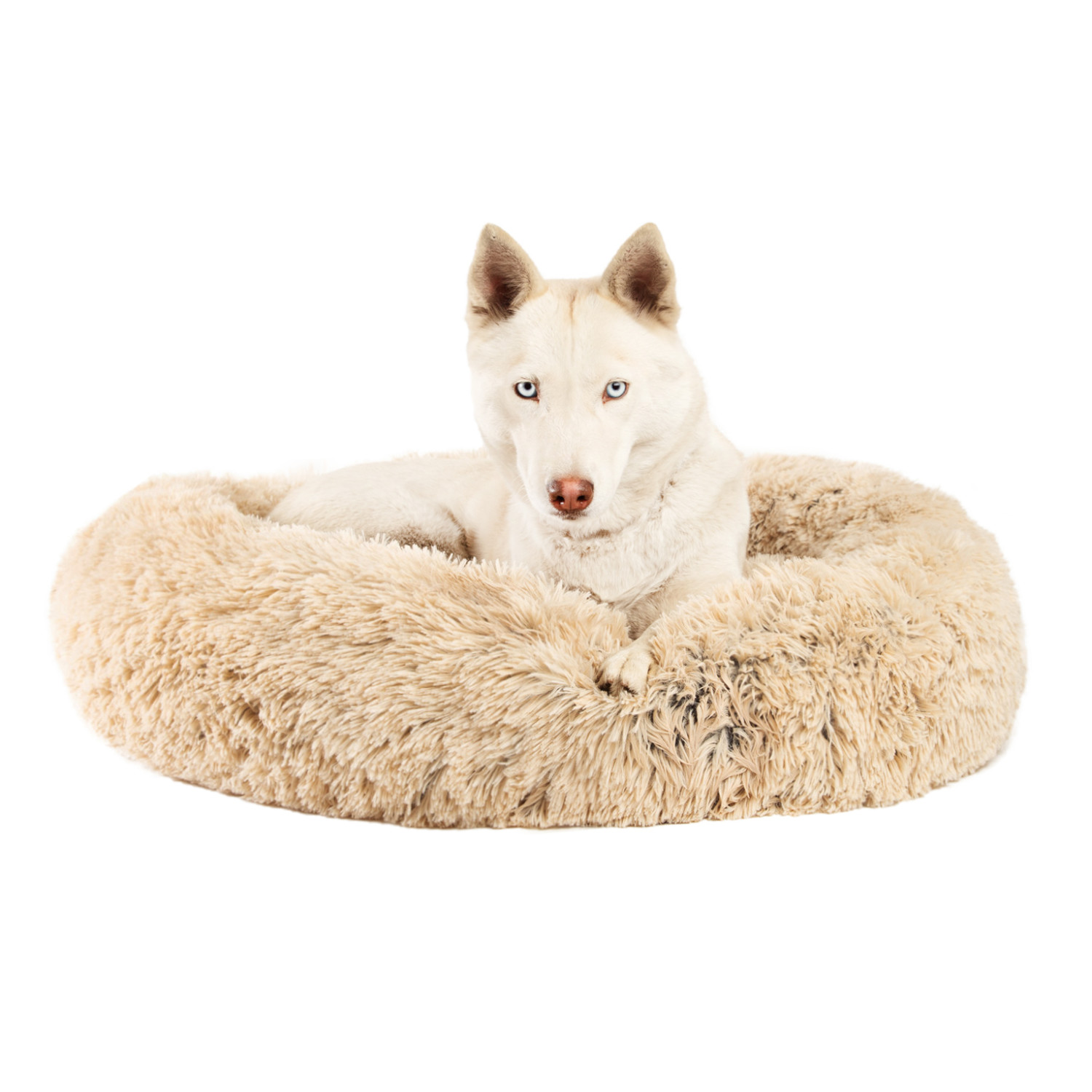
The Original Calming Donut Shag Cat & Dog Bed
Give your pet more than just a dog bed! Best Friend’s by Sheri is the original creator of the most popular dog bed that has surfaced the internet in recent years: The Calming Donut Dog Bed. This innovative cuddler shag design provides better sleep, supports joints, and offers a calming, self-warming effect. The donut cuddler is carefully crafted with durable, vegan nylon and filled with AirLoft fibers,…
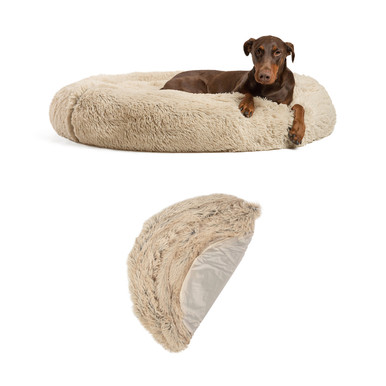
2 Piece Bundle: Donut Shag Bed, Shell Cover, Taupe, 45X45
Best Friends by Sheri Bundle Pet Gifts Savings: The Original Calming Shag Donut Cuddler Dog Bed in Extra Large 45″ x 45″ and Additional Zippered Shell Cover Self-warming Machine Washable TaupeBUNDLE PET DEAL: You’ll love the bargain; your pets will love the bundle pet gifts. Best friends by Sheri brings you the all time favorite of The Original Calming Shag Donut Dog Bed now with an additional zippered…

Lux Faux Fur Pet Throw Blanket, 40×50
This luxury plush blanket that’s perfect for your four-legged pals. The ultra-soft vegan fur is designed to reminisce a mother’s fur coat aiding your pets in superior comfort and security. The medium-weight embossed fur provides warmth and comfort. An effortless way for your pets to cuddle up on the couch or on the go. This versatile blanket will also help protect your furniture, car seats, and floors…
Entice Your Pooch With a Treat
A key part of crate training is positive reinforcement. If you give a dog treat to him every time he goes in his cage, eventually, he’ll learn to do it without his favorite treat there to entice him. Since you have an older dog, you’ll just want to make sure that you’re giving him a treat that’s healthy and won’t cause him to become overweight.
Some key points: Make sure that when you take your older dog to his crate, you speak to him in a gentle and happy tone. The crate door should be open and securely fastened so that the sound of it doesn’t startle him. This is especially critical if you rescued your older dog; he could have had negative experiences in the past and may be traumatized. You’ll need to be as calm as possible around him.
Slowly Increase the Amount of Time in the Crate
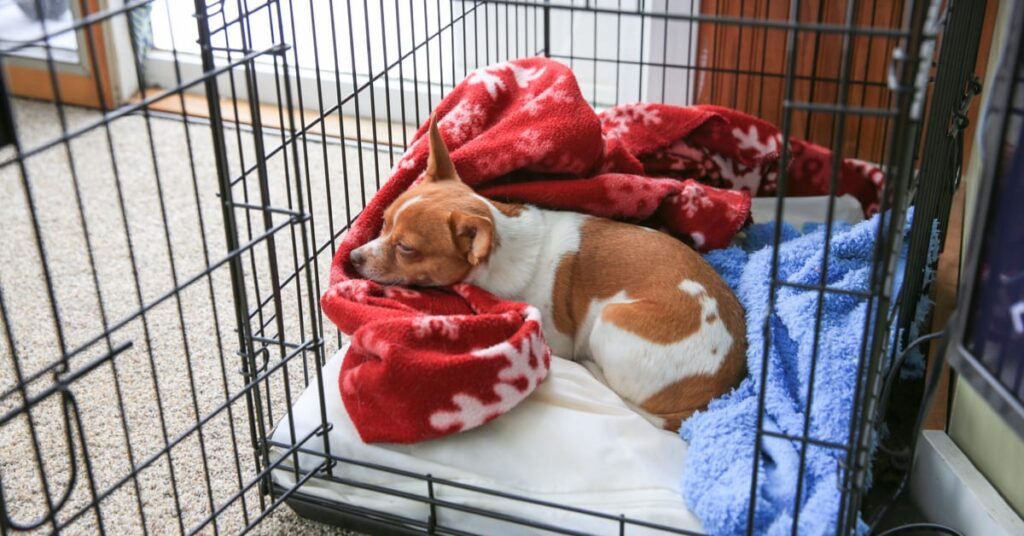
Your older dog should not spend a lot of time in the crate at first. Instead, gradually increase the length of time he spends in his crate.
For instance, if he’s very anxious about being left alone, you can put the crate in a room where you spend a lot of time, like the family room. Then, hang out by his crate for a few minutes to ensure he’s OK. Walk away at a certain point and see what happens. He may start barking or whining.
Once he’s crate trained to stay in there longer and longer, the barking and whining should subside. Just make sure that it’s a positive experience for him. Don’t yell at him or scold him when he’s making noise.
Also, consider that something else could be wrong; perhaps he has excess energy, is understimulated, wants more playtime, or he needs to take a potty break.
If it’s hot outside, you should leave a water bowl at the back of his crate. Don’t worry: it’s all part of the training process.
Once you get to know your dog, it should become simpler to figure out what’s wrong. Additionally, dogs are smart, and your older pooch should eventually get the hang of spending time in his crate.
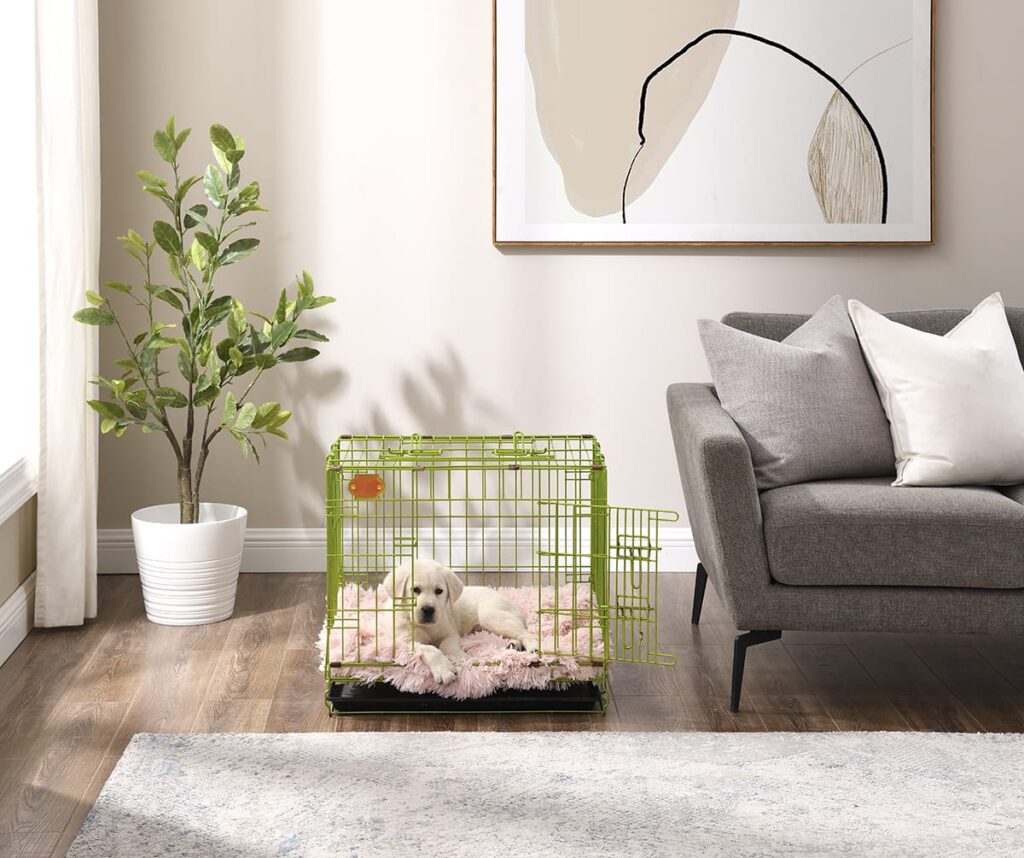
Get a Professional Dog Trainer
If you’re struggling to crate-train your dog, consider hiring a dog behaviorist or trainer for a training session. They may be more in tune with proper dog care and can give you specific step-by-step instructions on how to ensure your dog gets crate trained as soon as possible.
It requires some patience, like with all dog training, but you’ll get through it. It’ll be well worth it in the end.
Ensuring Your Dog Loves His Kennel
Above all else, you want your older dog to be happy and healthy. By emphasizing crate training, you can contribute to his overall happiness and do your part to make sure he lives a long and healthy life.
This post contains affiliate links. If you make a purchase after clicking one, Outward Hound may receive a small commission.
 Amazon
Amazon Chewy
Chewy
